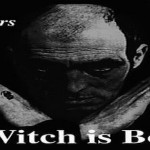In a strict chronology, I should next be discussing events in California and New England in the late 1960s, but, given the problem of many developments all happening more or less simultaneously, I think it will be clearer if I wrap up some later history of the Pagan Way movement, since I have covered its origins.
In creating the Pagan Way, Joe Wilson, Ed Fitch, John Hansen, and the other members of the Committee of Correspondence created a form of Witchcraft that was Gardnerian in all but a few oath-bound details. They hoped it would allow more people to become Witches than could possibly be accommodated by the extant Gardnerian covens, with their fairly strict rules on how long candidates for admission had to remain in training. The founders combined knowledge from their various traditions and created new rituals to replace those that were oath-bound. One major source for the work was the Grimoire of the Shadows that Ed had written while stationed by the military in Thailand in the 1960s.
The rituals, lore, and background material of the Pagan Way, which included major contributions by Donna Cole, were never copyrighted but were placed in the public domain in order to gain the widest possible distribution. Over the years, they have been republished several times by various occult houses as The Rituals of the Pagan Way, A Book of Pagan Rituals, and perhaps under other titles as well.
The Pagan Way movement soon had two major centers, one in Chicago, the other in Philadelphia, with other groves spreading about the country. In Chicago, Donna Cole, with Herman Enderle and Ginnie Brubaker, founded the Temple of the Pagan Way in 1970 as a formal Pagan Way grove. It practiced a combination of ceremonial magic and Ed’s nonsecret Craft rituals. The Temple was not a Gardnerian Outer Court, but it did serve to attract people whom Donna could consider for training and initiation into her Gardnerian coven, The Coven of the Sacred Stones, which she kept strictly separate from the Pagan Way.
The history of the Temple itself is complex. Enderle later left and started the Earthstar Temple. Other organizations were spun off from it. These have included Epiphanes, under the direction of Christa Heiden; Parthenon West; the Covenant of Gaea, under Ginnie Brubaker and Dave Norman, which hived from the Temple of the Pagan Way in 1971; and the Calumet Pagan Temple, founded by Richard Clarke in 1973. The name of the Temple was changed several times; in 1974, the Elders of the temple changed its name to the Temple of Uranus.
Dianis Lucien has written that
The Temple of the Pagan Way described itself as an Initiatory Temple and its goal as restoring the Temples of Initiation of the ancient Mysteries. The Temple distinctly understood and described itself as practicing Initiatory Craft. However, there was some ambivalence among the members about using the words “Witch” and “Witchcraft” . . [since] some of the members felt [that those] words (rather than the shorter form “Craft”) carried too much baggage, because of the negative connotations of the words to the average person, and would therefore be detrimental to the Temple’s goals. . . . This official ambivalence toward the words “Witch” and “Witchcraft” (not denial, but certainly not active espousal except by and as individual Initiates) is reflected in the fact that while some of the Pagan groups descended from the Temple identify themselves as practicing Wicca, or other forms of Witchcraft, there are also some that do not.
John Hansen was at first the mainstay of the Pagan Way in Philadelphia, but fairly soon Penny and Michael Novack took over from him and founded their own grove, which also served as a nest of the Church of all Worlds and was a member of the Council of Themis in 1972. In the 1970s Pagan Way groves spread across the United States, primarily in major cities but also in some small communities.
According to Ed Fitch, the Pagan Way was never intended to address the esoteric audience of those who wanted initiation and training in the Craft itself. Pagan Way appealed to two main audiences: those just getting started in Witchcraft, and those interested in attending Pagan ceremonies and structuring social and civic activities around them, much as in mainstream churches. The founders and early organizers let the movement take its own course. No central organization was formed; the groves and mailing centers remained autonomous and loosely affiliated. Some covens of Witches ran Pagan Way groups as training circles for interested persons and potential initiates. Candidates for initiation spent the traditional year and a day in probation, studying the Craft and undergoing evaluation by coven leaders. Not everyone who joined a Pagan Way training circle was initiated into Witchcraft. Those who were not remained in Pagan Way groups for as long as they chose or worked as solitaries or formed their own Pagan Way groups.
It is useful to distinguish between the Pagan Way as an organization and the Pagan Way Tradition, which continues to flourish. A pattern that has often been repeated is that what was originally a networking organization evolves its own new Tradition as a way of practicing the Craft. Within the Pagan Way, the ritual materials were adapted for those who wanted more esoteric aspects: initiation rites were added by Cole, Enderle, and others, and secret, closed Outer Courts were formed which gave more emphasis to magic. In this way the Pagan Way in Chicago evolved into an autonomous Tradition of the Craft (although, as Dianis Lucien commented, some members of this Tradition insist on referring to themselves as Pagans, not Witches). It is most easily identified by its use of a system of “elemental pacts”: five initiatory grades keyed to the elements in the sequence earth, water, air, fire, and spirit.
Given the evolution of the overall movement during the next decade, there came to be less and less need for the Pagan Way as an intake device for covens. By the early 1980s what was left of the Pagan Way had fallen apart, and groves dwindled in size and number. Even though the Pagan Way’s functions were taken over by other kinds of Pagan organizations, the Pagan Way rituals endured and continue to be used and adapted by numerous succeeding Pagan groups.
Another offshoot of the Philadelphia Pagan Way was the family of covens known as the Open Goddess Tradition, which was active in 1973 and 1974. Its High Priestess and High Priest were Pennie and Kevin Robbins, based in the Boston area; hence their history is entangled with that of the Boston Alexandrians (we’ll get to them). There were daughter covens headed by Ingrid Lupp in the Bronx and Linda Martorelli in Woodbridge, NJ. The Robbins were friends with Carol Maddox, who also used the names Claudia Haldane and Erinna Northwind. She taught a Tradition that she called Deborean and insisted was the true form of Witchcraft, which (according to the Witches at the Hub of the Universe, compiled by Jim Baker et al.), made it difficult for her to cooperate in the local networking meetings. She was active in the Boston area, began publishing a journal, Northwind News, in 1976, and had a group called People of the Holy Earth. In 1990 her group was called Eregion Grove.
According to the useful and quite accurate research of the Beaufort House group, some major offshoots of the Pagan Way Tradition have included: the McFarland Dianics, from which the Faerie Faith Tradition evolved; the Isian Tradition; the Starkindler Tradition; the Aglaian Tradition; and the Blue Star Tradition, which later spun off the Odyssian Tradition and then Pagans for Peace. I’ll eventually be discussing all of these.















